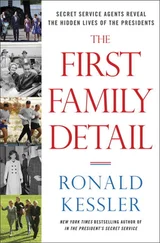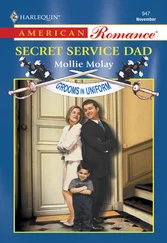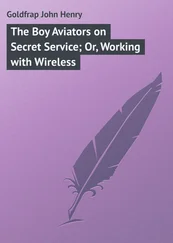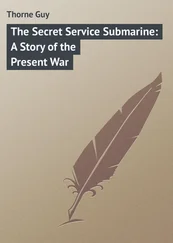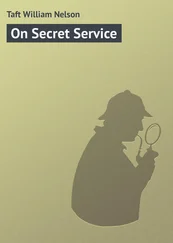“The [political] staff sometimes would propose stopping the magnetometers when an event was about to start,” says former agent William Albracht, who retired in 2001 and was an instructor. “I don’t know of any agent that has ever done that. That’s just not what we do. It doesn’t matter to us how your person looks in the media or to the crowds. It’s not really our concern. Our concern is that person’s safety.”
“You face pressure from political staffs all the time, but you don’t stop magnetometer screening,” says Norm Jarvis, who also taught new agents, was on Bill Clinton’s protective detail, and left the Secret Service in 2005 as a special agent in charge. “Sometimes things happen and the flow rate is a little slow. But nobody in the Secret Service would allow the staff to impair security and jeopardize the life of the president by stopping magnetometer screening.”
“Requests were made by staff to expedite or stop magnetometer screening,” says Danny Spriggs, who headed protection and retired as deputy director of the Secret Service in 2004. “I would never have acquiesced to that.”
23

Trailblazer
ON SEPTEMBER 11, 2001, the Secret Service rushed President Bush to Air Force One from a school in Sarasota, Florida, where he was reading to children in a classroom. Usually a Boeing 747 known as the doomsday plane accompanies Air Force One and is parked nearby when the president lands. Packed with ultrasensitive communications gear and military hardware, it is designed as a mobile command post in case of a devastating attack, such as a nuclear one. Consideration was given to transferring Bush to the doomsday plane after the 9/11 attack. The idea was rejected because just the sight of him entering the plane could have created panic.
“I spoke to him about not going back to Washington,” recalls Brian Stafford, the Secret Service director at the time. “The first time he was agreeable. Later when I spoke with him, he wasn’t as agreeable. By that time, we owned the skies. Even though we didn’t have all the answers we wanted, we were more comfortable about his going back than [we had been] earlier in the day.”
After landing at Andrews Air Force Base, Bush rode on Marine One to the White House.
Agents took Laura Bush from Capitol Hill to the basement of Secret Service headquarters. During such national emergencies, the Secret Service works with the military to ensure continuity of government and coordinates protection of those in the line of succession to the presidency. Because of that coordination function, even if officials in the line of succession receive protection from the State Department, as is usually the case with the secretary of state, or from the Capitol Police, as is the case with the Speaker of the House and the president pro tempore of the Senate, they receive a Secret Service code name. The secretary of labor, for example, was code-named Firebird after Elaine Chao objected to her assigned code name, Fireplug.
At the time of the attack, Laura traveled with only two cars and four agents. Before driving her to headquarters, the agents called for additional cars and backup. After 9/11, the number of agents on Laura’s detail was more than doubled.
Bush entered the White House at six fifty-four P.M. to find it surrounded by agents in black carrying submachine guns. Laura met him in the Emergency Operations Center, a bunker of rooms deep underground. That night, they were sleeping in their bedroom on the second floor at eleven-thirty when a Secret Service agent, breathing heavily from running, woke them up.
“Mr. President! Mr. President!” the agent said. “There’s an unidentified aircraft heading toward the White House!”
In their bathrobes, the Bushes returned to the underground bunker, where an aide pointed out a roll-out bed. Then word came that it had been a false alarm. The plane was friendly.
“George had to literally lead her to go downstairs,” Nancy Weiss, a close friend of the Bushes, says. “She can’t even find the bathroom without her contacts. She is very, very blind. She wears hard lenses because the correction is so much better.”
More than a month after 9/11, Laura Bush was at the Crawford ranch with her close friend Debbie Francis while Bush was in China. Laura’s Secret Service detail informed them of a threat they had picked up.
“They had me move from the guesthouse into the main house in case we had to evacuate quickly” Debbie Francis recalls. “I stayed in one of the girls’ rooms. For that one night, they didn’t want us to have any lights on in the house. So we closed all the curtains and just had a little candle burning.” Throughout the ordeal, Laura remained “totally calm,” Francis says.
Because of the extensive Secret Service preparations that precede his trips outside the White House, Bush preferred not to go out to restaurants. At one point, he told Laura he didn’t like to be stared at while he was eating. Laura laughed and said, “Well, maybe you shouldn’t have run for president.”
In contrast to her husband, Laura regularly slipped out of the White House to have lunch with friends at places such as Cafe Deluxe, Zola, or Old Ebbitt Grill. Her Secret Service detail would sit at nearby tables.
Presidents are required to pay for the incremental cost of their personal meals and personal parties—the cost of a lamb chop, for example. The White House or the State Department pays for official entertaining. The political party in power pays for Christmas events and cards. In all, twelve thousand people typically attend White House Christmas events. During a recent Christmas season, guests invited by the Bushes consumed a thousand pounds of shrimp, three hundred twenty gallons of eggnog, ten thousand tamales, and seven hundred cakes. That does not include the display-only three-hundred-pound gingerbread White House painted in white chocolate.
A buffet dinner for the press included roast lamb chops, chicken-fried steak with gravy, fruitwood smoked salmon, cocktail shrimp, Maryland crab cakes, bourbon-glazed Virginia ham, cheesy stone-ground grits, and tamales with roasted poblanos and Vidalia onions. Not to mention chocolate cake with chocolate buttercream frosting, chocolate truffles, apple and cherry cobblers, and countless glazed sugar cookies shaped like woodland creatures.
The government’s real annual cost of running the White House is anybody’s guess. The president receives a salary of $450,000 a year plus an expense allowance of $50,000 and $100,000 for travel. The White House and the Executive Office of the President receive $202 million a year. But these figures are a mere token of what the White House costs. The real costs—totaling more than a billion dollars—are unknown even to Congress and the Government Accountability Office, the audit arm of Congress, because dozens of other agencies help support the White House and detail employees to it.
“The total cost of the White House isn’t in any records,” says John Cronin, Jr., who directed the GAO’s audits of the White House for twelve years. “The navy runs the mess and Camp David, the army provides the cars and drivers, the Defense Department provides communications, the air force provides airplanes, the marine corps provides the helicopters. The State Department pays for state functions, the National Park Service maintains the grounds, the Secret Service provides protection, and the General Services Administration [GSA] maintains the East and West Wings and the Old Executive Office Building and provides heat.”
The mythology often conveyed by the press was that Bush was a puppet of Dick Cheney or, alternatively, that he was so stubborn he listened to no one. In fact, he made his own decisions and would let aides go if they were too timid to disagree with him. Thus, according to former chief of staff Andy Card, it was Bush who came up with the idea of paying a surprise visit to troops in Baghdad for Thanksgiving in 2003. Card says the first thing Bush wanted to know was whether the Secret Service thought it could be done safely. More than a month before the trip, Card met at the White House with Director Mark Sullivan and other Secret Service officials to begin planning the trip. The White House informed the Defense Department of the plans later.
Читать дальше


